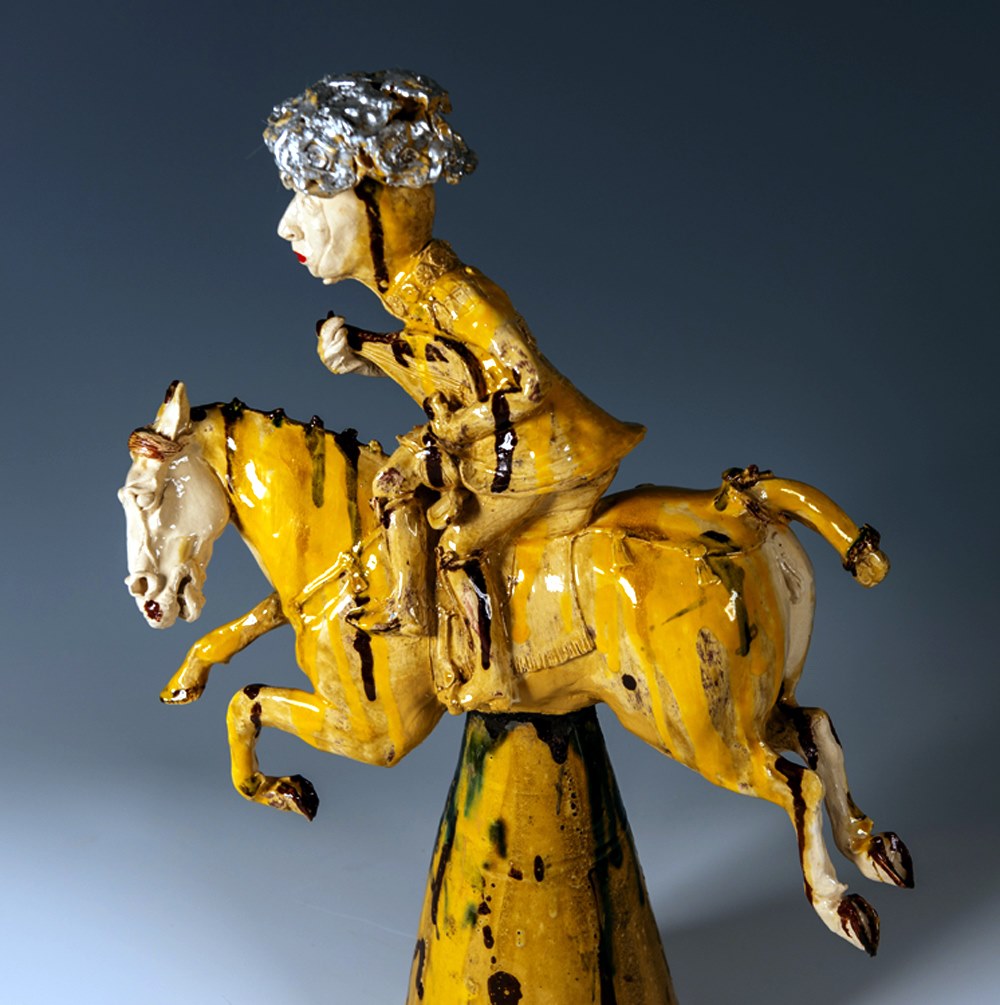

 Image credit: Andrew Hurdle
Image credit: Andrew Hurdle
‘From a young age, I have been captivated by the transformative power of clay. My grandmother would buy me brightly coloured plasticine and I spent countless hours modelling horses channelling my emotions into tactile, physical forms. Horses were the first creatures I encountered outside of my family home. Early connection to both horses and clay has profoundly shaped my artistic journey, enabling me to express my inner world with depth. Clay can be used to make functional objects but its ability to shape feelings and emotions through its plasticity is what truly inspires me sparking a lifelong passion for expressing myself in clay.
I hold a first-class degree from the University of Wales, Cardiff, which led to a scholarship at the Royal College of Art. My academic achievements have been the foundation for my practice, where I combine technical skill with historical and emotional narratives. In addition to my studio work, I lead clay and glaze workshops focused on the history of the horse in ceramics, sharing the rich legacy of this art form with others and teach SEND learners pottery at Richmond and Hillcroft Adult Community College in West London. Clays ability to allow the transfer of thoughts through hands from the inner self to the outside world is incredible and a powerful tool allowing many learners to make progress with communication and self-expression.
In 2017, I completed a residency in Fuping, China, immersing myself in the ceramic traditions of the Wei and Tang dynasties. During this time, I explored how Tang Dynasty artisans studied equine anatomy in extraordinary detail, translating the essence of horses into clay with remarkable precision. Drawing inspiration from their techniques, I have developed my own methods to imbue lifelike expression and movement into my clay horses, bridging historical practices with contemporary artistry. I have continued to study the horse in ceramic history focusing on India and Japan Bankura and Haniwa clay horses and am currently researching to write a book on this subject.
My work frequently incorporates animals, particularly horses, as symbols to convey emotions and personal narratives. Clay, with its inherent plasticity, allows me to shape these feelings into tangible forms, creating a dialogue between the inner self and the external world. I explore themes of Gender Dysphoria within my ceramic practice, reflecting narratives from the LGBTQ+ community. Through this work, I aim to use clay as a powerful medium for engaging audiences with profound emotions and compelling imagery to break through stigma and fear.
Clay continues to excite me as a vessel for storytelling, connection, self-expression and discussing the human condition’.